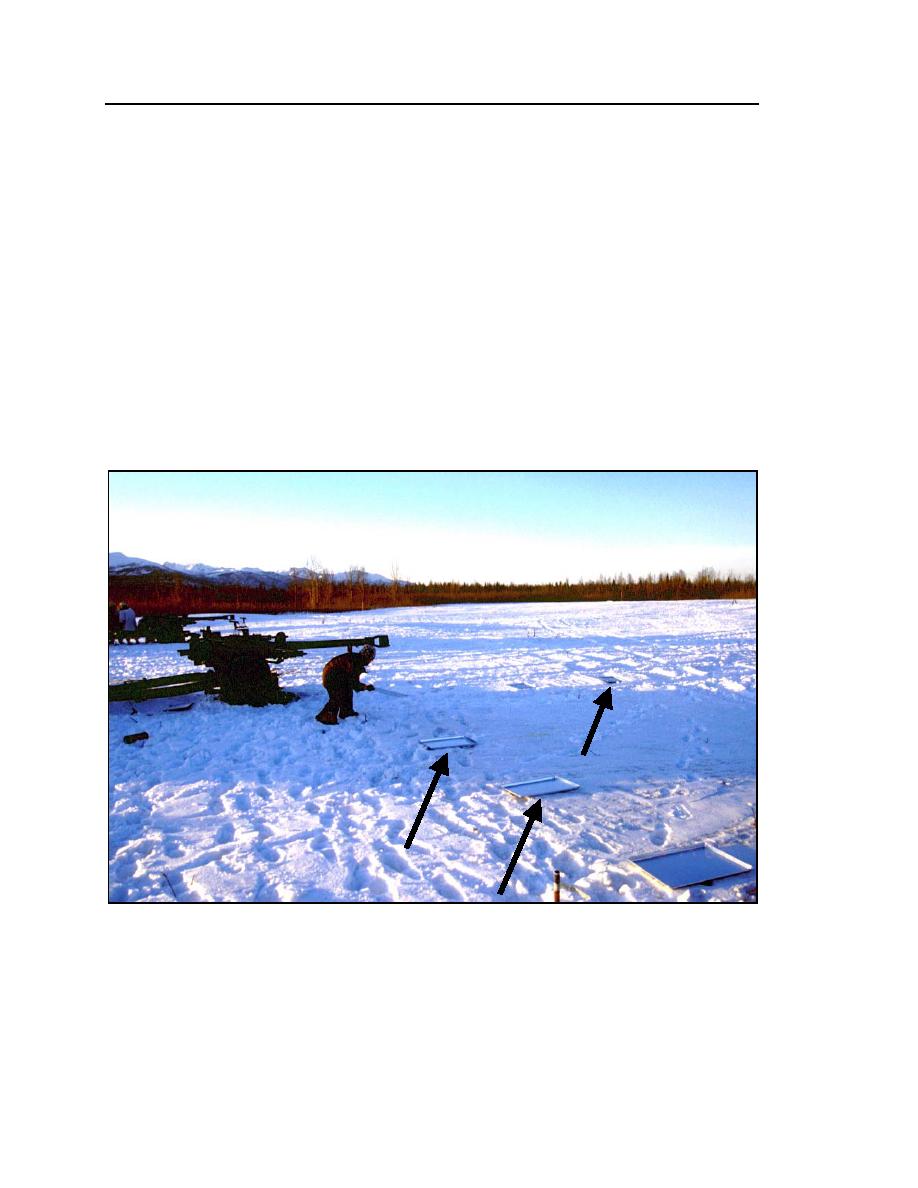
8
ERDC/CRREL TN-04-1
Composite samples are collected using either a 10-cm, 15-cm, or 20-cm
square PTFE-lined aluminum scoop (Fig. 4, front right and left). These scoops
have a 2-cm-high edge to help gauge the tool depth while taking a sample. The
scoops are lightweight and easy to use and clean. A commercially available 10-
cm stainless steel scoop is shown behind the 20-cm scoop.
In addition to collecting residues from the surface using scoops, we have also
used pre-placed trays when sampling BIPs. The trays are 43 63 cm with a 3-cm
rim. We have used them on both soil and snow, at detonation locations and firing
points (Fig. 5). When used during winter tests, they are very effective at collect-
ing particles for later analysis. They also work well in summer, although dust and
some soil is inevitably deposited on them following detonation. They were very
useful when used to recover small whiskers from the propellants used when
firing howitzers during a winter live-fire test.
a. Placing trays prior to firing.
Figure 5. Collection of propellant residues using trays at a snow-covered firing point.



 Previous Page
Previous Page
